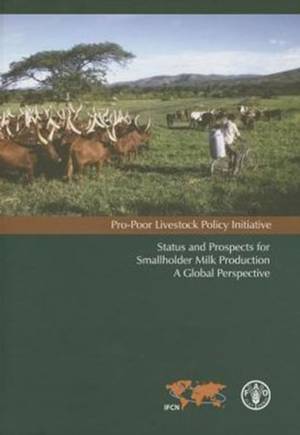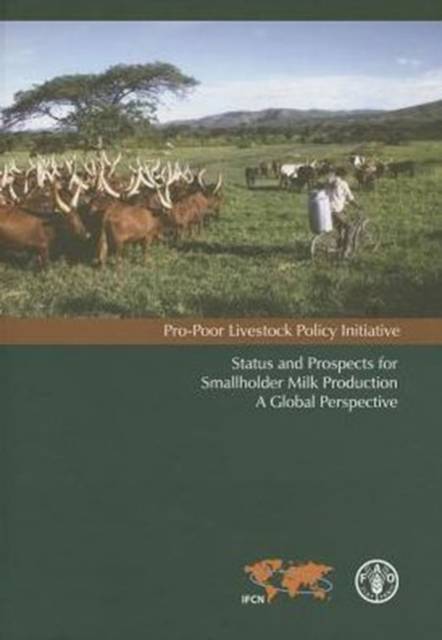
- Afhalen na 1 uur in een winkel met voorraad
- Gratis thuislevering in België vanaf € 30
- Ruim aanbod met 7 miljoen producten
- Afhalen na 1 uur in een winkel met voorraad
- Gratis thuislevering in België vanaf € 30
- Ruim aanbod met 7 miljoen producten
Zoeken
Status and Prospects for Smallholder Milk Production
A Global Perspective
Torsten Hemme, Joachim Otte
Paperback | Engels
€ 61,45
+ 61 punten
Omschrijving
In 2005, some 1.4 billion people lived in absolute poverty and nearly 1 billion were affected by chronic mal- or undernutrition. An estimated 75 percent of the world's poor live in rural areas, and at least 600 million of these keep livestock that enable them to produce food, generate cash income, manage risks and build up assets. With the valuable contribution that livestock makes to sustaining livelihoods, especially in rural areas, the development of small-scale livestock enterprises could be a key element of efforts to eradicate extreme poverty and hunger. Milk production is an important livestock-sector activity and it is estimated that nearly 150 million farm households throughout the world are engaged in milk production. Small-scale milk production not only improves food security of milk producing households but also creates significant amounts of employment in the entire dairy chain, which comprises many small-scale rural processors and intermediaries. The aim of this book is to provide a holistic picture on the trends and drivers in the dairy sector as well as the implications these may have for the future of dairy farming, in particular among the smaller-scale, rural producers.
Specificaties
Betrokkenen
- Auteur(s):
- Uitgeverij:
Inhoud
- Aantal bladzijden:
- 184
- Taal:
- Engels
Eigenschappen
- Productcode (EAN):
- 9789251065457
- Verschijningsdatum:
- 8/06/2010
- Uitvoering:
- Paperback
- Formaat:
- Trade paperback (VS)
- Afmetingen:
- 211 mm x 297 mm
- Gewicht:
- 771 g

Alleen bij Standaard Boekhandel
+ 61 punten op je klantenkaart van Standaard Boekhandel
Beoordelingen
We publiceren alleen reviews die voldoen aan de voorwaarden voor reviews. Bekijk onze voorwaarden voor reviews.











